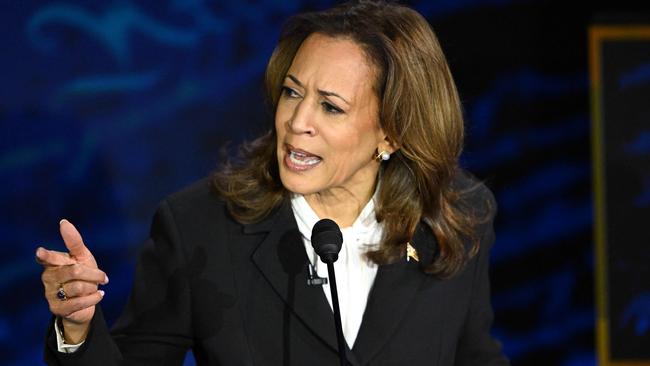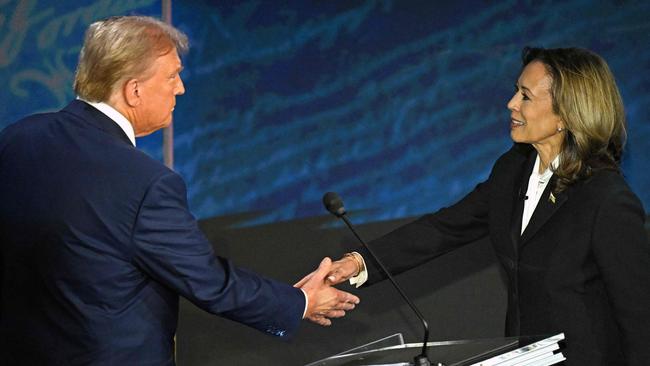
Kamala Harris plans the biggest tax attack on the top level levels of American wealth ever launched by a presidential candidate in the last century. It was not discussed.
Donald Trump plans to raise vast sums via tariffs and then spend the money on corporate tax deductions and the continuation of tax deductions for large areas of the US population. We don’t know what Harris will do on the deductions front. Again, it was not discussed.
The impact of both the Harris tax blows to the wealth-creating parts of the US community and the Trump tariffs have profound implications for the US and world sharemarkets. Most of those involved in equity markets around the world listened to the debate, looking for guidance. They did not receive it.

To the extent the US election will be decided by the material discussed in that debate, the US electorate has no idea what Harris plans to do. She is very good at smiling.
For decades, there has been debate in the US about the widening disparity between the wealth at the top of their capital system and those at the other end.
The Harris attack on the wealth section of the US community starts with the corporate tax rate.
Including average state taxes, it rises from 25.6 to 32.2 per cent – one of the highest in the OECD. There are no franking credits.
The current top combined federal-state personal tax rate is 42.5 per cent. Harris will lift it to 58.1 per cent, including a proposed Medicare tax.
The current combined capital gains taxes total 29.1 per cent. The Harris proposals would raise the top tax rate on capital gains to 38.3 per cent – in the OECD, only Denmark is higher.
Some of the money will be used to help those at the lower-income end, but not all. In addition, Harris plans price controls covering drugs and food.
The US stockmarket has not priced in what is being planned by Harris, either expecting she will lose or will not be able to introduce the required legislation.
The Harris tax increases over the next 10 years are estimated by the Tax Foundation to raise $US2.2 trillion ($3.3 trillion). Trump proposes to decrease company tax to 20 per cent, and then after that to 15 per cent.
The Harris individual tax increases will raise $US1.2 trillion over 10 years. In addition, there is a further volley of taxes on the very rich, including an unrealised capital gains tax on billionaires. These billionaire taxes raise a further $US1.1 trillion over 10 years. This will make the US one of the highest taxed countries in the world.
The US Tax Foundation says this huge increase in taxes will cause the US GDP to fall and jobs to be lost, and almost certainly will reduce American competitiveness.
On the other side, Harris is planning a series of benefits to those on lower incomes, including benefits for children. A small amount of the money raised goes to small business and housing.
The housing policy goes to help people buy dwellings but does not increase the supply. We have seen in Australia and other parts of the world that when aid is given to housing buyers and not equated with incentives to create dwellings, it boosts prices which neutralises the aid.
The Trump policy is funded by the revenue from tariffs which will be substantial and be particularly directed at China where a 60 per cent tariff is proposed. In the debate, Trump was very clear that those companies and particularly Chinese companies building manufacturing plants in Mexico would find it very difficult to export to the US.
The fact that Trump is funding lower corporate taxes by tariffs is again a very different policy to what we have seen in recent decades. The Trump tax cuts are not covered by the expected tariff revenue, and so the deficit rises.
There are a series of tax and benefit reductions that Trump introduced at the closing stages of his previous administration that expire in 2025. He plans to make them permanent.
Harris has not stated what she will do with those policies, so this represents one of the great quandaries of the American election, which presumably will get sorted out in the campaign.

From a media perspective, I was very saddened that the two interviewers from the ABC did not ensure questioning about these tax policies that are at the core of the election campaign. As so often happens in the US media, they get sidetracked into the emotive issues of the day.
Behind the Harris policies is the view that there is an unfair distribution of wealth in the US. The top 0 .1 per cent of Americans owned 11.2 per cent of US wealth in 2000 and in 2024 their wealth has reached 13.3 per cent of the total – that’s why they are being hit with an unrealised capital gains tax.
The top 10 per cent of Americans own 55 per cent of the nation’s wealth. The Harris tax policy is about closing the gap but ignores the impact this will have on both the total level of wealth and on employment.
It is fascinating that in Australia we elected a government that did not hit large corporations with higher taxes in the way Harris is planning, but is implementing a similar hard-left agenda via an industrial relations act.
In many cases it increases wages but, in all cases, it delivers increased union control, which almost certainly will lead to lower productivity.
The debate over the industrial relations legislation did not arise in the election campaign because it was not announced by Prime Minister Anthony Albanese until he came into office.
The equivalent Harris policies have been announced, but not debated.






The American ABC network’s presidential debate was unreal.